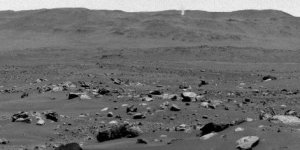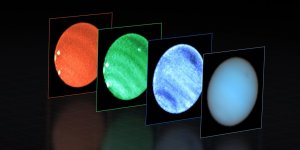| News / Space News |
NASA’s Bennu Asteroid Sample Contains Carbon, Water
Initial studies of the 4.5-billion-year-old asteroid Bennu sample collected in space and brought to Earth by NASA show evidence of high-carbon content and water, which together could indicate the building blocks of life on Earth may be found in the rock.

A view of the outside of the OSIRIS-REx sample collector. Sample material from asteroid Bennu can be seen on the middle right. Scientists have found evidence of both carbon and water in initial analysis of this material. The bulk of the sample is located inside. Photo: NASA/Erika Blumenfeld & Joseph Aebersold
“The OSIRIS-REx sample is the biggest carbon-rich asteroid sample ever delivered to Earth and will help scientists investigate the origins of life on our own planet for generations to come,” said NASA Administrator Bill Nelson.
Although more work is needed to understand the nature of the carbon compounds found, the initial discovery bodes well for future analyses of the asteroid sample.
The secrets held within the rocks and dust from the asteroid will be studied for decades to come, offering insights into how our solar system was formed, how the precursor materials to life may have been seeded on Earth, and what precautions need to be taken to avoid asteroid collisions with our home planet.
The goal of the OSIRIS-REx sample collection was 60 grams of asteroid material. Curation experts at NASA Johnson, working in new clean rooms built especially for the mission, have spent 10 days so far carefully disassembling the sample return hardware to obtain a glimpse at the bulk sample within.
When the science canister lid was first opened, scientists discovered bonus asteroid material covering the outside of the collector head, canister lid, and base. There was so much extra material it slowed down the careful process of collecting and containing the primary sample.
Within the first two weeks, scientists performed “quick-look” analyses of that initial material, collecting images from a scanning electron microscope, infrared measurements, X-ray diffraction, and chemical element analysis.
X-ray computed tomography was also used to produce a 3D computer model of one of the particles, highlighting its diverse interior. This early glimpse provided the evidence of abundant carbon and water in the sample.
For the next two years, the mission’s science team will continue characterizing the samples and conduct the analysis needed to meet the mission’s science goals.
NASA will preserve at least 70% of the sample at Johnson for further research by scientists worldwide, including future generations of scientists.
As part of OSIRIS-REx’s science program, a cohort of more than 200 scientists around the world will explore the regolith’s properties, including researchers from many U.S. institutions, NASA partners JAXA (Japan Aerospace Exploration Agency), CSA (Canadian Space Agency), and other scientists from around the world.
YOU MAY ALSO LIKE





